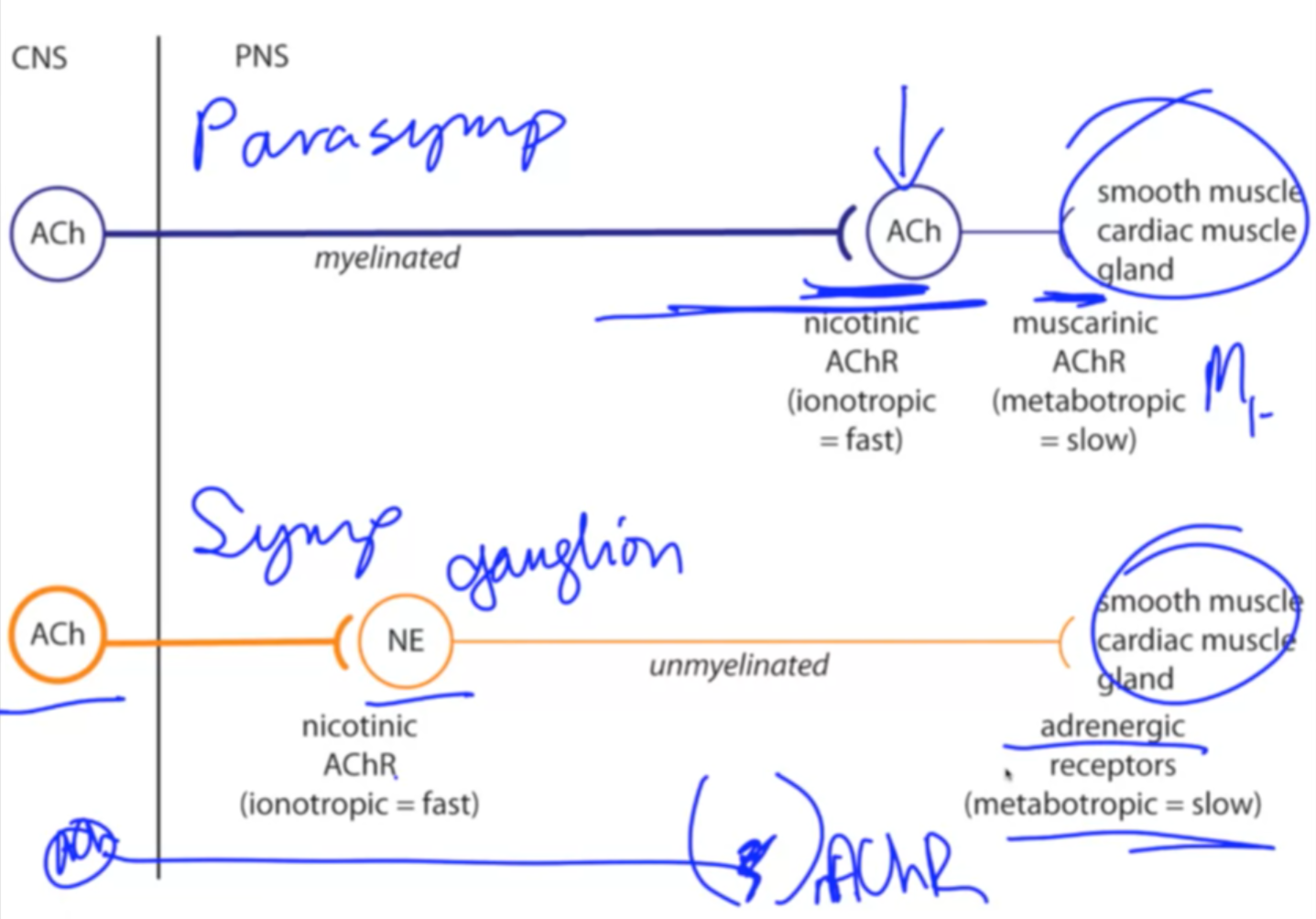Pharmacology of the Autonomic Nervous System
 Lecture Summary:
Lecture Summary:
- This lecture discusses the pharmacology of the autonomic nervous system, which is involved in regulating various bodily functions.
- Drugs are used to treat conditions by mimicking or blocking the effects of neurotransmitters in the autonomic nervous system.
Key Points:
- Autonomic nervous system:
- Composed of sympathetic and parasympathetic systems.
- Regulates involuntary functions like heart rate, digestion, and gland secretions.
- Neurotransmitters:
- Acetylcholine (ACh) is used in both systems:
- Pre-ganglionic neurons in both systems use ACh.
- Parasympathetic post-ganglionic neurons use ACh.
- Norepinephrine (NE) is used in the sympathetic system post-ganglionic neurons.
- Acetylcholine (ACh) is used in both systems:
- Receptors:
- Nicotinic ACh receptors: Fast-acting, located in ganglia (both sympathetic and parasympathetic).
- Muscarinic ACh receptors: Slow-acting, located in parasympathetic effector organs (smooth muscle, cardiac muscle, glands).
- Adrenergic receptors: Slow-acting, located in sympathetic effector organs (smooth muscle, cardiac muscle, glands).
- Alpha and beta subtypes exist.
- Drugs:
- Mimic neurotransmitters: agonists (e.g., drugs mimicking ACh at muscarinic receptors).
- Block neurotransmitters: antagonists (e.g., beta-blockers that block beta-adrenergic receptors).
- Effects of drugs:
- Parasympathomimetic/parasympatholytic drugs generally have no direct effect on the brain.
- Sympathomimetic/sympatholytic drugs can have central nervous system effects and affect mood or motivation.
Additional Notes:
- The lecture mentions specific examples of drugs but doesn’t delve into their details.
- The lecture emphasizes the slow, indirect nature of autonomic effects compared to the fast actions of the skeletal motor system.